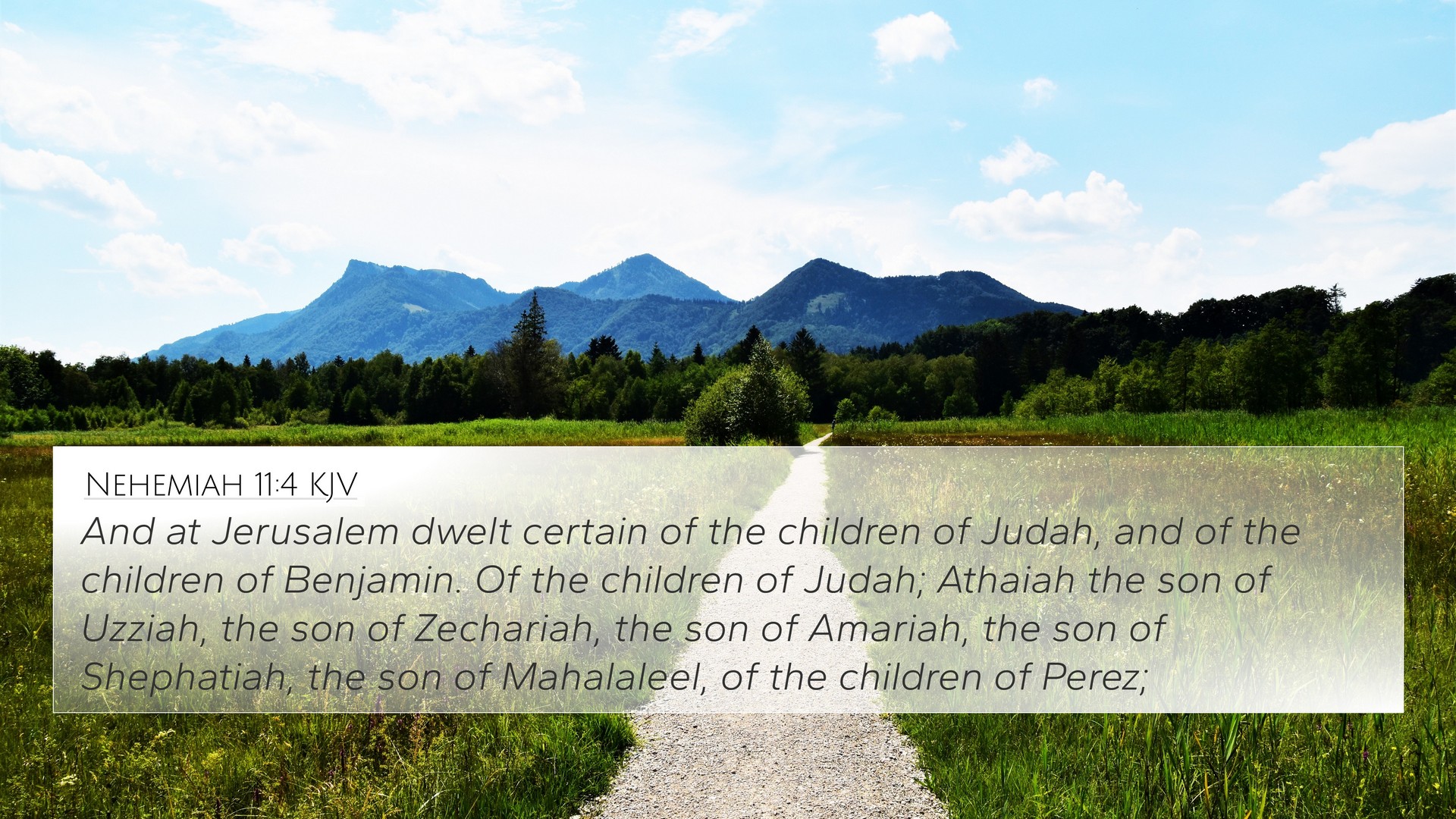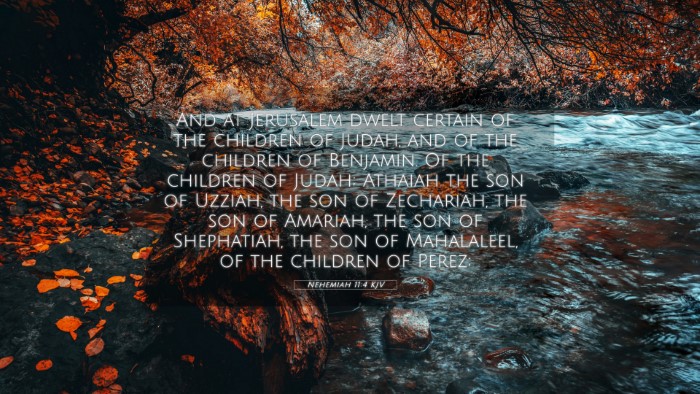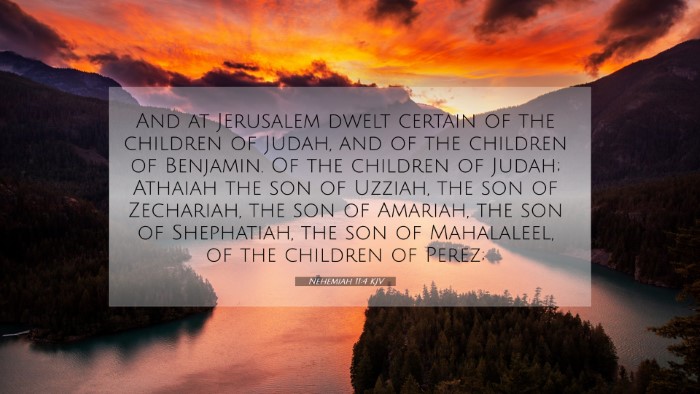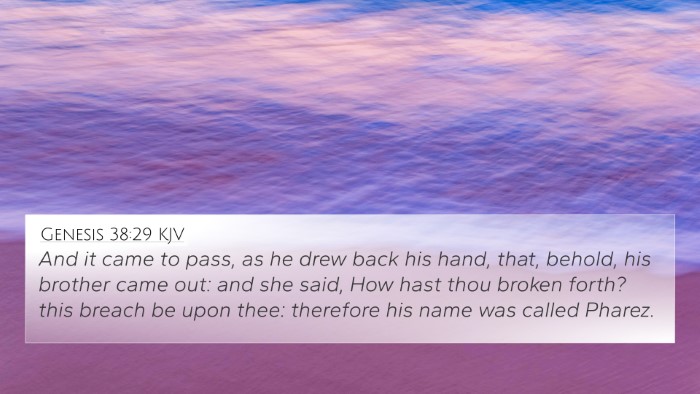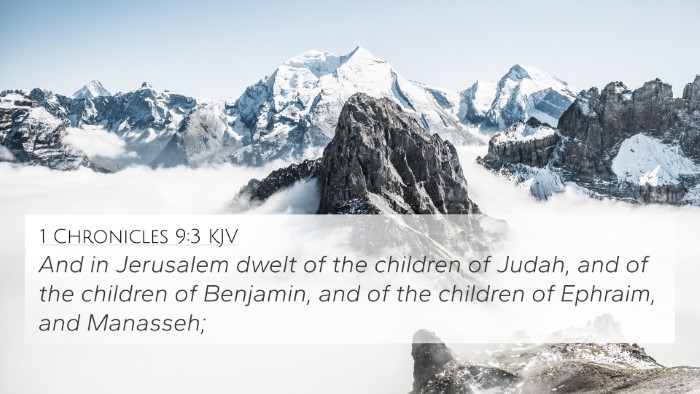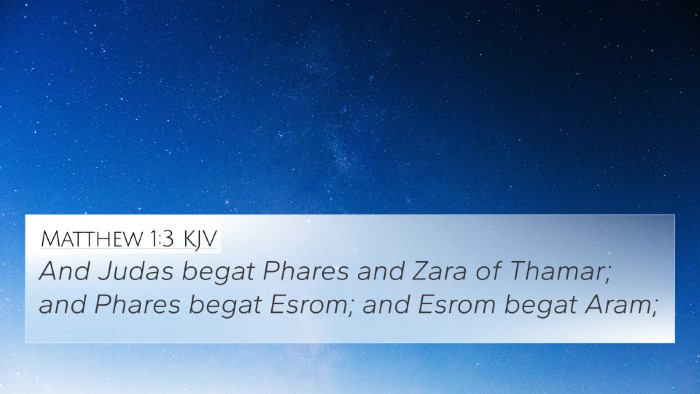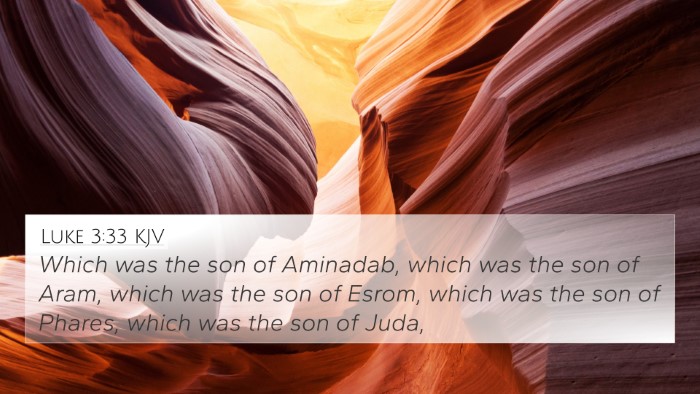Understanding Nehemiah 11:4
Bible Verse: Nehemiah 11:4 - "And in Jerusalem dwelt certain of the children of Judah, and of the children of Benjamin."
Summary of Meaning
This verse highlights the return of the exiled Jews to Jerusalem, specifically noting the presence of families from the tribes of Judah and Benjamin. It marks a significant moment in the restoration of the Jewish community and, by extension, the rebuilding of Jerusalem following its destruction. The re-inhabitation of Jerusalem is a key part of God’s plan for His people, indicating a return to their covenant relationship and the fulfillment of prophetic promises.
Commentary Insights
Matthew Henry's Commentary
Matthew Henry discusses the importance of the families mentioned in this verse, emphasizing the significance of their respective lineages in Israel's history. He notes that the tribes of Judah and Benjamin, alongside the Levites, were crucial for the rebuilding process and the restoration of worship in Jerusalem. Henry also points to the fulfillment of God's promise that His people would return after captivity.
Albert Barnes' Notes
Albert Barnes emphasizes the selection of these individuals to dwell in Jerusalem as a testimony to God's faithfulness. He reflects on the physical and spiritual implications of their resettlement, indicating the start of a new chapter in the history of Israel and the importance of Jerusalem as the religious and administrative center.
Adam Clarke's Commentary
Adam Clarke gives insight into the socio-political ramifications of the returnees. He elaborates on the roles that these families from Judah and Benjamin would play in the governance and structure of the city, noting that their presence was essential in re-establishing order and worship in a city that had experienced devastation.
Cross-References for Deeper Understanding
In studying Nehemiah 11:4, several Bible verses can be referenced to gain a fuller understanding:
- Ezra 2:1-2: Provides a list of the returnees from exile, including the tribes of Judah and Benjamin.
- Jeremiah 29:10-14: Speaks about God's promise to restore Israel after the exile, linking the themes of captivity and restoration.
- Zechariah 1:16: God promises to return to Zion and dwell in Jerusalem, supporting the idea of restoration.
- Isaiah 11:12: References the gathering of the children of Israel from the four corners of the earth, correlating with the regathering in Nehemiah.
- Nehemiah 7:6-7: Lists the people of Israel who returned from captivity, highlighting their heritage.
- Haggai 1:12: Discusses the call to rebuild the temple and elevate worship, resonating with Nehemiah's mission.
- Matthew 1:12: Referring to the lineage of Jesus, including Judah and Benjamin, thus highlighting their continued significance.
Thematic Connections
Nehemiah 11:4 is not only a historical note but also serves as a connection point for several Biblical themes, including:
- Restoration: The return of the exiles emphasizes God's desire to restore His people.
- Covenant Faithfulness: The presence of Judah and Benjamin in Jerusalem underscores the unbroken covenant between God and Israel.
- Community and Identity: The rebuilding of Jerusalem is tied to the identity and unity of the Jewish people.
- Worship and Sacrifice: The return allows the re-establishment of proper worship practices, which are pivotal to their community life.
Finding Connections in Scripture
For those interested in scriptural cross-referencing, Nehemiah 11:4 serves as an anchor point for understanding:
- How the return from Babylon correlates with prophetic literature.
- The role of Jerusalem in both the Old and New Testaments.
- Relationships between post-exilic leaders and the establishment of new practices in Israel.
Using Bible Cross-References Effectively
To study Nehemiah 11:4 using tools for Bible cross-referencing, consider the following methods:
- Utilize a bible concordance to identify related verses by common themes or keywords.
- Explore a bible cross-reference guide that highlights key verses connecting historical narratives.
- Engage in cross-reference bible study by connecting passages across different books.
Conclusion
By cross-referencing Nehemiah 11:4 with related verses, readers gain a broader understanding of the themes of restoration and community in the Bible. This verse underscores not only a historical event but also a theological significance reflecting God’s enduring promises to His people.
